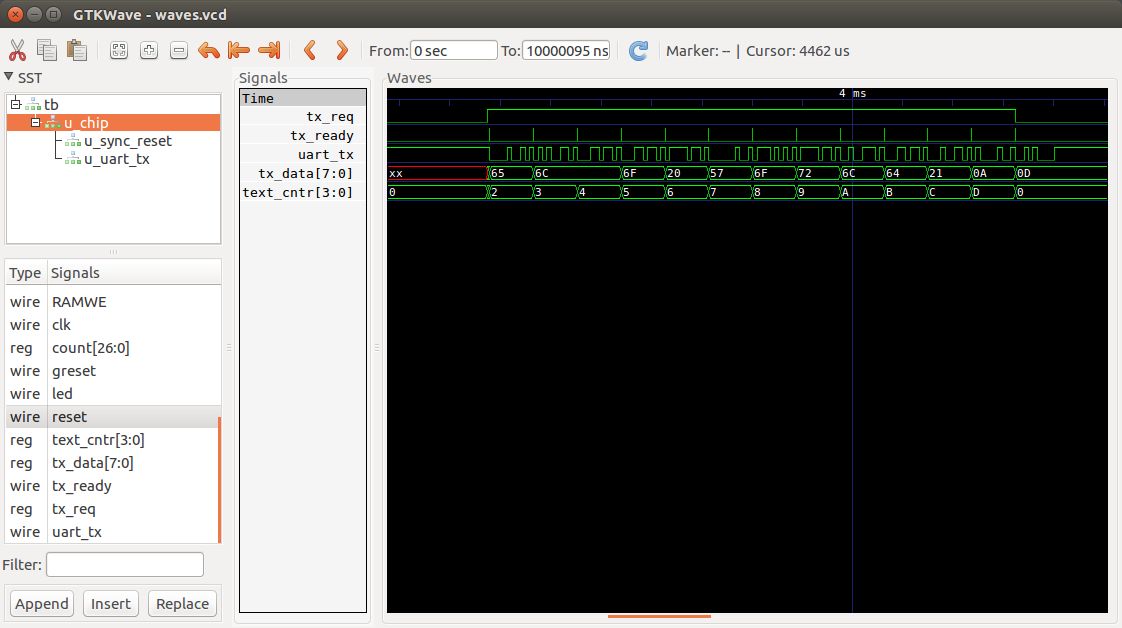opensourcefpgas
Open Source FPGAs using the MyStorm BlackIce II
This project is maintained by piersh
Simulation
Simulation is a useful technique to see debug and verify your Verilog modules.
To use simulation, you need to write a test bench system Verilog file, usually called tb.v.
The BlackIce hello_world example has such a test bed file:
`timescale 1ns/100ps
module tb();
initial begin
$dumpfile("waves.vcd");
$dumpvars(0, u_chip);
end
reg clk;
reg reset;
initial begin
clk = 1'b0;
end
initial begin
reset = 1'b1;
repeat(10) @(posedge clk);
reset = 1'b0;
repeat(1000000) @(posedge clk);
$finish;
end
always begin
#5 clk = !clk;
end
chip u_chip(
.clk(clk),
.greset(reset)
);
endmodule
This generates a a 100Mhz clk signal by reversing clk every 5 nanoseconds. It generates a reset signal for 10 clk cycles and then run the top level Verilog file for 1 million cycles which is 10 milliseconds.
To run this file, type “make sim” and a file called waves.vcd is produced. The Makefile uses iverilog to produce an executable, which it then runs.
You can analyse the waves.vcd file by running the gtkwave application: “gtkwave waves.vcd”.
You can then select the signals you want to see and append them to the display.
Here is the relevant output
